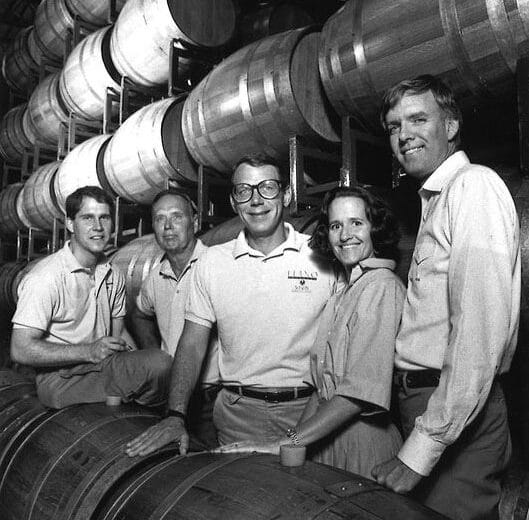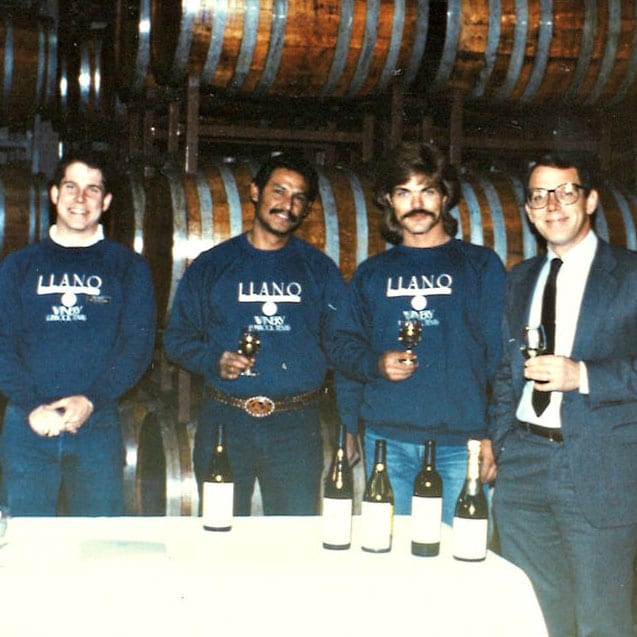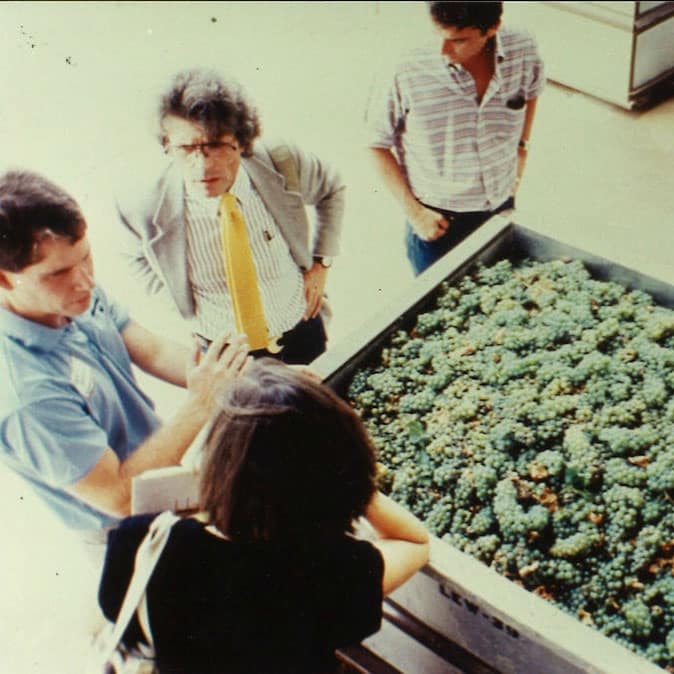Crafting Texas Wines Since 1976
Nearly 50 Years of Texas Winemaking Excellence
Founded in 1976 in Lubbock, Llano Estacado Winery began with a bold dream—to prove that exceptional wine could be made right here in Texas. In an era when the state’s wine industry was still in its infancy, our founders took a chance on West Texas soil, crafting wines that would go on to shape the very identity of Texas winemaking.
Our Story
From Humble Roots to Texas Wine Pioneer
The Early Vision That Sparked Texas Winemaking

In the mid-1970s, a group of Texas Tech University professors and local investors set out to prove that premium wine could be made in Texas. This bold idea took root in Lubbock, where our first vintages laid the foundation for a new era of winemaking in the Lone Star State—built on grit, innovation, and a belief in Texas terroir.
First Accolades and the Rise to Global Recognition

Our breakthrough came in 1984 when our Chardonnay earned a rare Double Gold Medal at the San Francisco International Wine Competition. This moment put Llano Estacado on the national stage, signaling that Texas wines could stand among the best. It was the start of decades of awards and recognition from across the country and around the world.
Expanding Texas Wine to the World

Over the next 20 years, Llano wines reached markets across the United States, Europe, Japan, and Russia. We brought on California winemaker Greg Bruni to lead production and Mark Hyman as VP of Sales & Marketing—forming one of the most experienced management teams in Texas wine history and expanding our influence far beyond state lines.

The Winery
Crafting Texas Wines in Lubbock
Every drop of Llano wine is made in our state-of-the-art production facility in Lubbock, Texas. Here, our team produces over 100,000 cases annually, making us the largest premium winery in the state. The facility is equipped for precision winemaking on a large scale while maintaining the hands-on care that has defined Llano for decades.
Winemaker
JASON CENTANNI
Part of the Llano family for more than 20 years—leads our cellar team with a passion for blending Texas tradition with modern technique.
From our Sweet Red to reserve-tier wines, every bottle reflects the quality, innovation, and pride that comes from being a Texas winery.
See the Winery in Action
The Vineyards
Sourcing from Texas’ Best
Llano Estacado partners with some of the finest vineyards in Texas, carefully selected for their exceptional fruit and ability to express the diversity of our state’s terroir. These partnerships allow us to craft wines that reflect the rich soils, sunny days, and cool nights that define Texas winemaking.
OUR VINEYARD PARTNERS INCLUDE
Canted County Vineyard – Lamesa, TX
Dell Valley Vineyard – Dell City, TX
Farmhouse Vineyards – Brownfield, TX
Kubacak Vineyards – Tahoka, TX
Lilli of the Vine Vineyard – Lamesa, TX
Newsom Family Farms – Levelland, TX
One Elm Vineyards – New Home, TX
Reddy Vineyard – Brownfield, TX
Tallent Vineyards – Mason, TX
Veesart Vineyards – Shallowater, TX
Great wine starts in the vineyard—and Texas vineyards are among the best in the world.
Farmhouse Vineyards – Brownfield, TX
Canted County Vineyard – Lamesa, TX
Dell Valley Vineyard – Dell City, TX
Kubacak Vineyards – Tahoka, TX
Lilli of the Vine Vineyard – Lamesa, TX
Newsom Family Farms – Levelland, TX
One Elm Vineyards – New Home, TX
Reddy Vineyard – Brownfield, TX
Tallent Vineyards – Mason, TX
Veesart Vineyards – Shallowater, TX
A Bold Future for Texas Wine
Under the new ownership of wine industry veteran Bret Perrenoud and a team of Texas investors, Llano Estacado is poised for an exciting new chapter. We’re preserving our legacy while expanding our reach with new tasting rooms, enhanced hospitality experiences, and a flagship Hill Country winery in Fredericksburg.
Plans include:
Cactus Alley Tasting Room
Lubbock
Opening Fall 2025
A new tasting destination in the heart of Lubbock, located near Texas Tech University, perfect for casual sips or special gatherings.
Airis 'ele Estate Expansion
Texas Hill Country
Opening June 2026
Along the famed Wine Road 290, this expanded estate will showcase Llano wines alongside the acquired Airis’ele portfolio in a stunning Hill Country setting.
Winery Tasting Room Expansion
Lubbock
Opening Fall 2026
Our flagship Lubbock winery will feature a reimagined tasting room with enhanced hospitality areas, member-exclusive spaces, and upgraded event facilities.
Downtown Tasting Room
Fredericksburg
Opening 2027
A flagship downtown Fredericksburg location designed to offer a premier Texas wine experience for locals and visitors alike.
From our first vintage to our latest release, every bottle of Llano Estacado wine carries the story of Texas—its soil, its sun, and its spirited people. We’ve been part of Texas celebrations for nearly five decades, and we invite you to be part of the journey ahead.
Our Legacy, Your Glass
Experience the heart of Llano Estacado Winery where every bottle is crafted. Take a guided tour of our production facility, enjoy a barrel tasting, or relax on our patio with a glass of your favorite wine.
